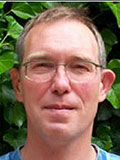Kurt Jensen, University of Aarhus

Kurt Jensen is professor and head of the Department of Computer Science at the University of Aarhus, Denmark.
Kurt Jensen is the "father" of Coloured Petri Nets. He made the initial definition of the CPN language, including the hierarchy constructs that allow a Petri net model to consist of a set of cooperating sub-models. He played a key role in the development of analysis methods and tool support for high-level Petri Nets, in particular place invariants and state spaces. He was the first to exploit symmetry to reduce state spaces and he also got the basic idea behind the more recent sweep-line method. He is the author of a 3-volume monograph on Coloured Petri Nets.
Kurt Jensen is the leader of the CPN group at University of Aarhus, Denmark. The group consists of 15 persons and it is considered to be the world-leader with respect to the practical application of high-level Petri Nets. The group made the Design/CPN tool, which was licensed to 1000 organisation in 60 countries. Over the last years the group has developed CPN Tools, which is the "successor" of Design/CPN. It has now more than 4000 licenses in 123 different countries.










